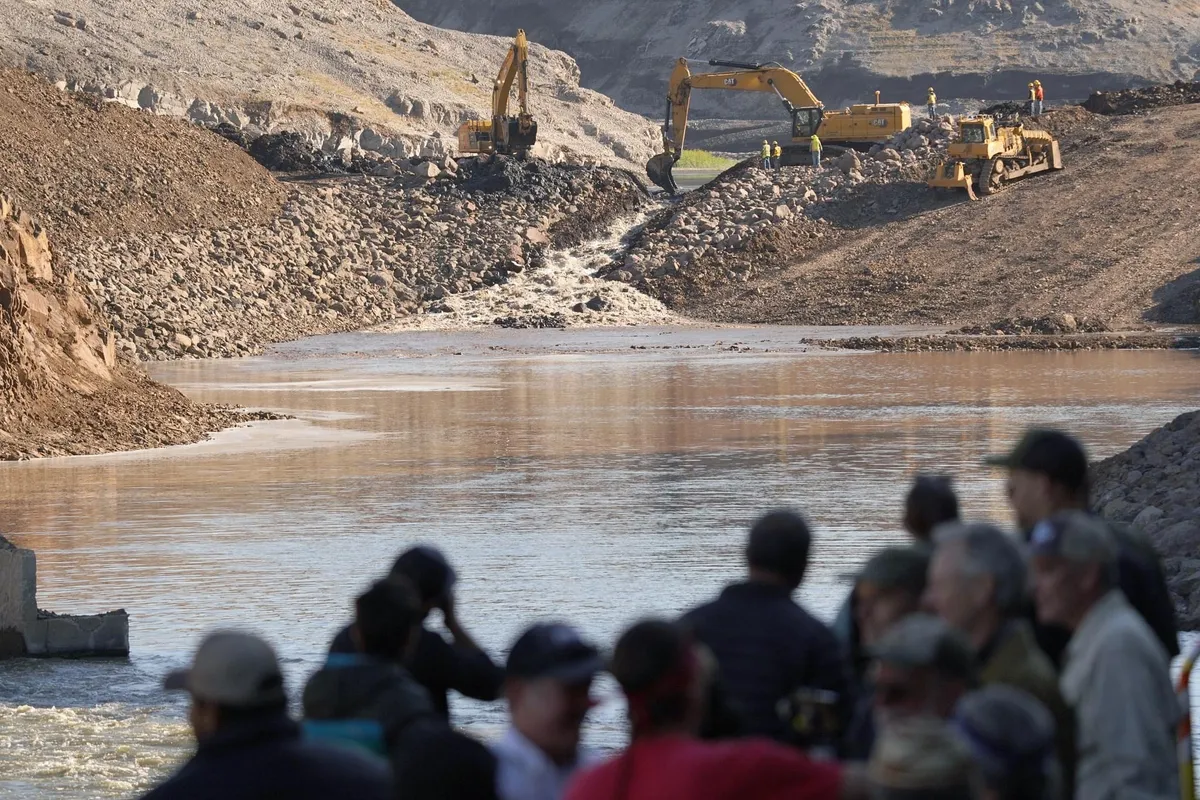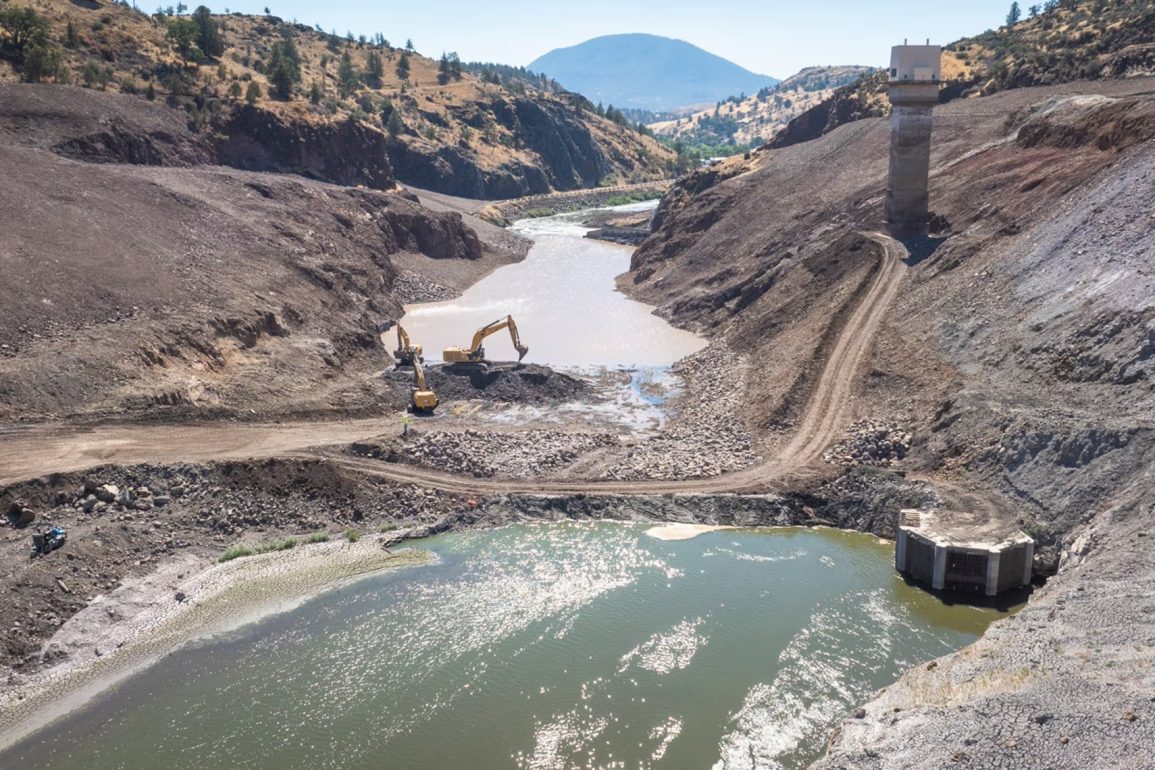The recent demolition of the last of the four dams on the Klamath River, situated at the California-Oregon border, represents a major triumph for tribal communities and environmental advocates who have spent decades fighting to restore the river’s health. This final dam removal completes a long-term effort to undo the damage caused by the dams, which severely impacted salmon populations and overall river ecology.
Brook Thompson, a member of the Yurok Tribe, vividly recalls the 2002 fish kill on the Klamath River, which profoundly affected her and many others in her community. The sight of thousands of dead fish motivated Thompson and other members of the Yurok, Karuk, Hupa, and Klamath Tribes to launch a relentless campaign to remove the dams that had obstructed the river and fostered harmful algae growth, leading to the devastating fish die-off.
On the day of the final dam removal, the breaching of the coffer dams at Iron Gate and Copco I allowed the Klamath River to flow freely once more, reopening access to up to 400 miles of critical salmon spawning and nursery habitats. This event marks the culmination of a two-decade-long battle to remove the dams and restore the river, setting the stage for a new phase in the Klamath Basin’s restoration.

The Klamath River has endured over a century of mismanagement and injustices, including the construction of dams on ancestral lands and alterations to the basin for agriculture. These changes resulted in significant declines in salmon populations, which in turn affected the health and culture of the indigenous tribes dependent on the river. The depletion of salmon had far-reaching impacts, contributing to increased social and health issues within the tribal communities.
Efforts to address these issues intensified after the 2002 fish kill, leading to the formation of the “Undam the Klamath” campaign. Tribal members, environmentalists, and their allies worked tirelessly to advocate for the removal of the dams. The Federal Energy Regulatory Commission’s approval in November 2023 initiated the final phase of dam removal, with the last coffer dams now breached, allowing for unimpeded migration of fish and the restoration of the river’s ecosystem.
As the river recovers, ongoing projects will focus on restoring lands and tributary creek beds affected by the dam removal. The Shasta Indian Nation is also preparing to celebrate the restoration of 2,800 acres of land previously inundated by reservoir waters.
Despite temporary declines in water quality due to residual silt and algae, the long-term outlook for the river remains positive. Continued efforts are essential to ensure the river’s health and the return of salmon populations, which are crucial to the cultural and nutritional well-being of the Klamath Tribes.

